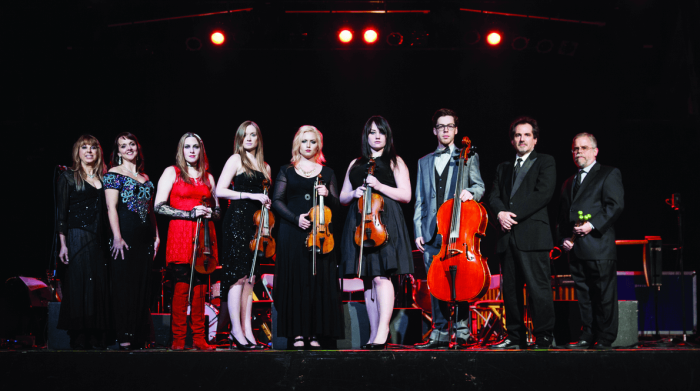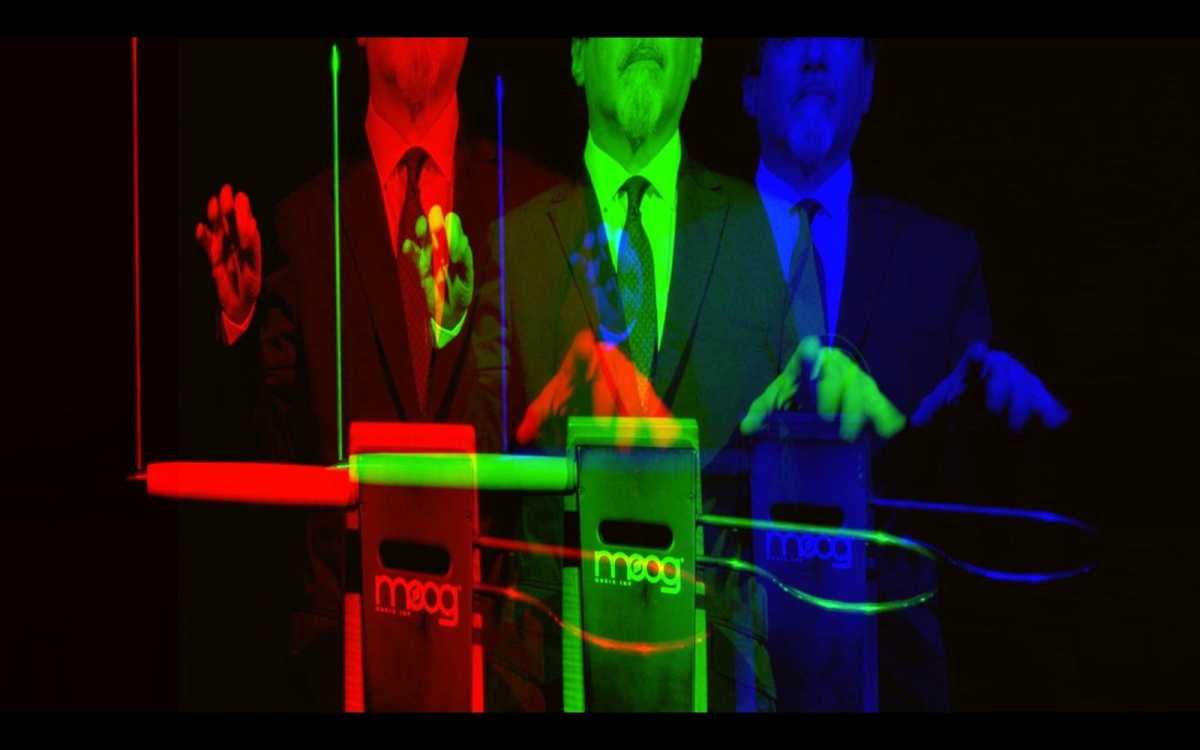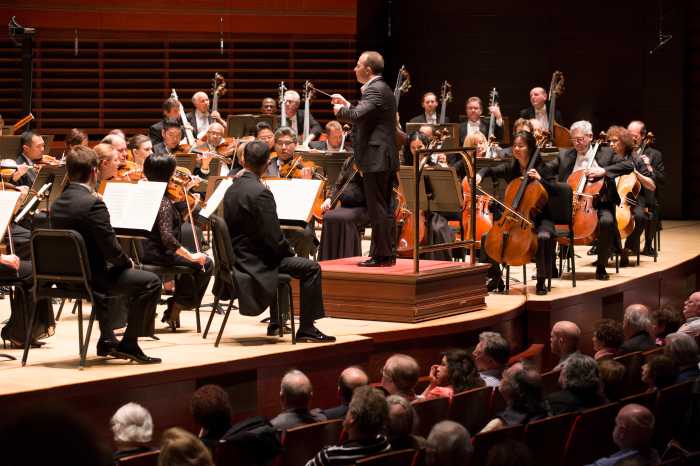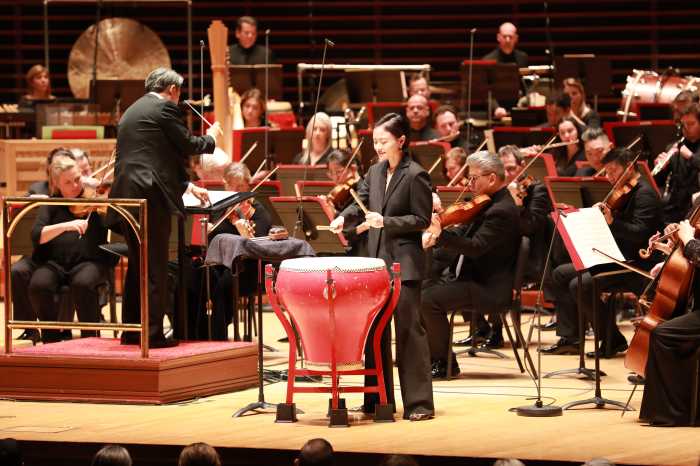The Theremin.
Invented in 1922 by Russian physicist and radio engineer León Theremin, the Theremin was the first musical instrument controlled without physical contact. It was the original electronic musical instrument, a tool that opened the door to sounds unknown, ethereal and haunting.
At the end of the 1990s, Mano Divina Giannone, a Philadelphia percussionist who spent time studying his craft with Sun Ra and Tito Puente, discovered, then harnessed, the power of the Theremin for his own end – sonic ideas richly spiritual and ripe with elements of opera, modern classicism and horror soundtracks from films of the 1950s.
Uniquely combined with the strains of his Divine Hand Ensemble – a chamber string group with an accordionist, vibraphonist and two harp players – Mano Divina (as he is known on stage) has harnessed electrical sound goes on a “sci-fi musical journey” with its debut album, ‘Aria 51’. The newly released vinyl will also have a live celebration at the Fallser Club on Midvale Avenue on June 21.
Mano Divina recently sat down with Metro to discuss more.
What attracted you to making music with the Theremin?
After years of exploring the human primal grace of rhythms, I wanted to learn an ethereal-sounding, spiritual feeling instrument, one with angelic heavenly timbre. I saw Jean Michel Jarre perform with a Theremin and recognized the potential for pulling beautiful musical notes out of thin air. So, I got one. I realized that in order to master it I would need to dedicate myself to it completely and set aside my 9 other instruments to attempt to tame its wireless howl into a heavenly voice using only the pure sine wave and no FX. 20 years later I’m making progress. I taught her how to sing with my hands.

Is there a subtler brand of music that can only be performed with Theremin and a chamber ensemble?
Yes. I was listening to certain opera arias and loving the way some singers would float the note’s importance over the syllables of the aria, and thought that would be a good place to start. A lifetime of collecting beautiful melodies came in handy to get beyond just “Ave Maria”, and diving into everything from Mozart’s Requiem to Bellini’s La Sonnambula.
Is there something you do as a practice with your hands and arms so to make the Theremin sound like a conjuring?
It is conjuring. It’s electric sorcery. I’m playing air and air is always in motion. There is nothing to look at, feel or touch. The notes seem to float around in the air instead of staying put like on a piano. The reason why it makes a sound is the reason it’s so hard to play. I’m standing in a field of electrified air. I have to vibrate the electrified air molecules correctly until their vibration coincides with the vibration pitch of a musical note — and then with no tactile benefit — gauge the interval and vibrate the air molecules correctly to the next note without the dreaded micro-tones creeping in.
To do this quickly in the musical passage, I must remain perfectly still, as everything my body does — no matter how slight — reads in the field and pitch proximity. Even breathing alters my carriage. It takes a long time to teach yourself stillness. You may think you can be still, until a very sensitive device is acutely measuring your movement, and then you got to go crack jokes to the audience — because, you know, entertainment — and then get right back in that zone, alone with the music, still, except for my hands and the vibrating air. I got it down after the first 100 shows and can turn it on/off like a switch, now.
I understand the music’s haunting overtones, and its connection to horror films of the 1950s. But what connects what Divine Hand does to the world of science fiction a la ‘Aria 51’?
The sci-fi sound and the concept behind ‘Aria 51’ is that after I learned to play opera arias, correctly, I knew that the Theremin would never replace the divine human mechanism of the voice. My arias had an otherworldly feel, mixed with the Theremin’s long history for the spooky sounds of cinema and the flying saucers of Hollywood — from Hitchcock to Scooby-Doo — it seemed a natural title for an album of singing electricity on popular favorites from the 20th century.
The Theremin, in your hands, has an operatic voice. Is there a calculated process to all this or is it ever impromptu, like automatic writing?
It’s calculated. For example, in our cover of Bowie’s ‘The Man Who Sold The World,’ I’m doing Klaus Nomi’s operatic vocal parts from the SNL performance. On ‘Wild is the Wind,’ I’m doing a syllable perfect rendition of Bowie’s phrasing. On Zappa’s ‘Peaches En Regalia,’ I’m emulating his guitar, but on ‘Phantom of the Opera,’ I’m doing the voice parts. In some of our funerary music posted online, I get to float and hover, but most of my parts are memorized and drilled. I very seldom perform with sheet music unless its brand new or really hard.



























